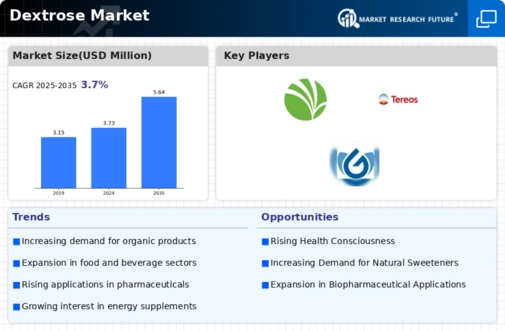Market Share
Dextrose Market Share Analysis
The Dextrose market, a vital component of the global sweeteners industry, has witnessed substantial growth, and companies operating within this sector employ diverse market share positioning strategies to gain a competitive advantage.
One prominent strategy in the Dextrose market is product differentiation. Companies focus on offering high-quality dextrose with unique features that distinguish their products from competitors. This can include variations in particle size, purity levels, or special formulations tailored to specific industrial applications. By providing distinct advantages, companies aim to capture a larger market share by appealing to a diverse range of customers with varying needs.
Pricing plays a crucial role in market share positioning within the Dextrose market. Some companies position their products as premium offerings, emphasizing superior quality and purity. This premium positioning targets industries that prioritize the highest quality dextrose for applications such as pharmaceuticals or premium food products. On the other hand, other companies may adopt a more cost-effective pricing strategy to attract a wider customer base, especially in industries where price sensitivity is a significant factor.
Brand reputation and marketing are pivotal elements in market share positioning. Establishing a strong and reliable brand image is essential for gaining the trust of customers and industries that rely on dextrose. Companies invest in marketing campaigns that highlight the quality, reliability, and versatility of their dextrose products. Positive associations with the brand not only attract existing customers but also contribute to market share growth as the brand becomes synonymous with quality in the minds of consumers.
Distribution channels are another key aspect of market share positioning. Companies strategically choose distribution partners and channels to ensure their dextrose products are readily available to a wide range of customers. This involves collaborations with distributors, wholesalers, and retailers to optimize product accessibility. Additionally, having a robust online presence and e-commerce capabilities can further enhance market reach, especially in today's digital age.
Innovation is a driving force in the Dextrose market. Companies invest in research and development to create new applications for dextrose or to improve existing processes. This innovation not only allows companies to stay ahead of the competition but also opens up opportunities for diversification. For example, the development of dextrose-based ingredients for the healthcare or sports nutrition sectors can contribute to market share growth by tapping into emerging trends and consumer demands.
Collaborations and partnerships are becoming increasingly prevalent in the Dextrose market. By partnering with other companies in the food and beverage industry, pharmaceuticals, or various manufacturing sectors, dextrose producers can expand their market reach. Collaborations may involve joint ventures, co-branding initiatives, or strategic alliances that leverage the strengths of multiple companies to collectively gain a larger share of the market.







Leave a Comment